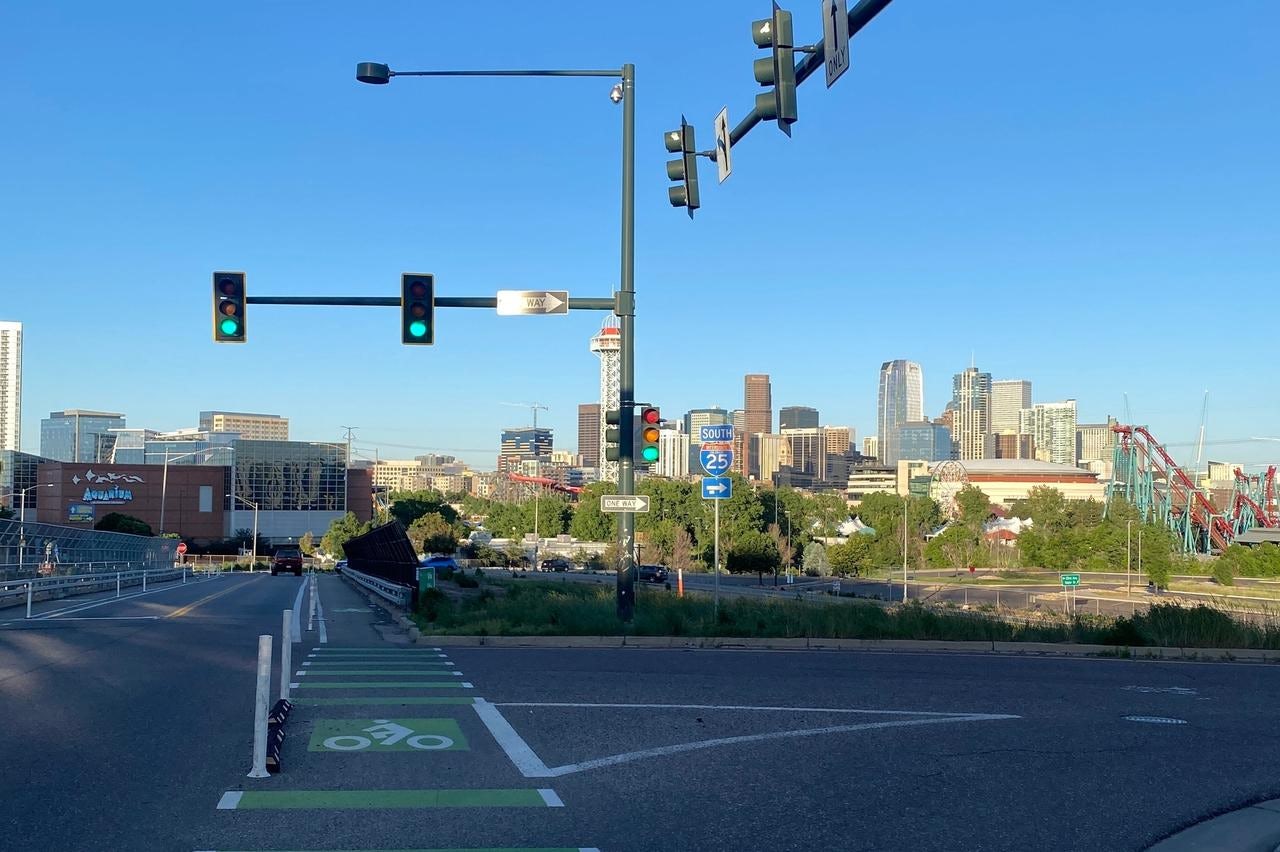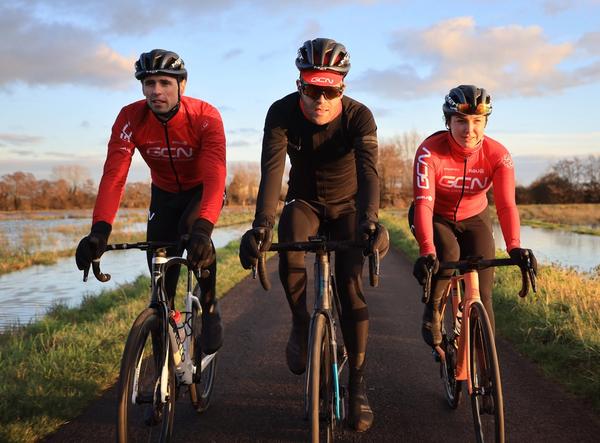The best cities for cycling in the United States
People for Bikes ranked the top American cycling cities
Logan Jones-Wilkins
Junior Writer - North America
Logan Jones-Wilkins
A new urban cycle path through the heart of Denver, Colorado
The United States is not always in the news for being the safest place to cycle. With its big wide roads, high speed limits and large personal vehicles, it can be very daunting to be a cyclist in any capacity in the US. That said, there are some gems in the States and the advocacy group People for Bikes has tried their best to rank them.
People for Bikes has been calculating bike scores for a number of years in the United States and abroad. They describe the scoring system as, “a data-driven program that evaluates, identifies, and compares the best global cities and towns for bicycling.”
The organisation, which is based in Boulder, Colorado, has built a methodology that accounts for a number of factors including: speed limits, bike lanes, intersection construction, connected networks of cycling safe passage, reallocated space in favour of cycling and walking, and reliable data from open source intelligence.
In total, People for Bikes gave scores to the 1,484 cities in the US as well as 249 international cities on a scale of 0-100. Scores from 0-20 are reserved for cities with poor bike infrastructure and connectivity, which means there are limited bike lanes and cycling-safe gaps between where people live and the services they need. Scores from 80-100 are reserved for the best cycling cities that provide seamless and safe transportation for most residents to get the services they need. While these scores are the best, they are very rare in big cities.
For large cities, a score of around 40 would be solid whereas one around 50 would be the threshold of great big cities to bike. The 20-50 point scorers are where most of the bigger cities in the US sit, while the UK is generally within the same range for their big cities, even if they lag behind in terms of the smaller towns.
Putting aside the international scores for now, and the picture that People for Bikes shows in the United States shows that there are some general trends that are shaping the cycling landscape in America. Whether you are looking to possibly reallocate to a more bike friendly town, or simply wondering if it makes sense to rent bikes on your next family road trip, here are some of the important take away points from the most recent rankings.
The Midwest is making strides while the Southeast lags behind
When one thinks of the best places to be a cyclist in the United States, the American West is, most likely, the images that come to mind. And while these states have been and continue to be amongst the strongest in terms of their cycling scores, the region where new cycling infrastructure projects have been thriving is the upper Midwest.
Particularly in states like Wisconsin and Minnesota, there has been an explosion in bike infrastructure in some of the largest cities in each state. In fact, Minneapolis, Minnesota, saw its ranking shoot up to top of the most recent large city ranking with a score of 68/100. St Paul, Minnesota, and Milwaukee, Wisconsin, have also been risers in the large city category, while Detroit, Michigan, is sitting in the top ten and is above the 40 point threshold.
In terms of medium and small cities, towns from Iowa and Nebraska also make the top cut, with a priority being placed in all these places on alternative and sustainable transportation. Much of these projects have come on in the last few years as the federal government has allocated funding and priority on these types of projects under the impetus of the Democratic party agenda.
With the political undertones of these projects present, and the fairly rigid geography of politics in America, not all of the country has been adopting the bike and pedestrian forward infrastructure of the upper Midwest. The Southeast, in particular, has been slow in adoption of these infrastructure developments.
Compared to the West, Midwest and Northeast, the cycling outlook of the Southeast is almost that of another country.
While there are small towns with successful bike infrastructure, most of those are very small, very exclusive towns in states like Florida. In terms of mid-sized to large cities, the contrast is stark. Arlington, Virginia, is the only southern mid-sized city over 50 and it comes in at 54/100. It is worth noting as well that Virginia is only just in the Southeast, while many people further South would not even consider it as a Southern state. Arlington is also the city that is the furthest North in Virginia and is, essentially, an extension of Washington D.C.
For the large cities, Austin, Texas, which comes in at 31/100, is the best large city in the South by a far margin. The other prominent Southern cities – like Miami, Orlando, Atlanta, Charlotte and Nashville – are all in the mid to low 20s. Those scores are hard to celebrate when compared to the large cities of the Northeast, Midwest and West.
Lower speed limits lead to dramatically lower mortality in cyclists and safer cities
It is no secret that more speed equals more risk in cycling. Nevertheless, just how much speed impacts the potential mortality for cyclists when they get hit by cars is dramatic.
According to a study by the National Highway Traffic Safety Administration, in the United States most cycling fatalities happen where the speed limit is 45 mph (70 kph). 35 mph (56 kph) and 55 mph (88 kph) zones follow as the next most deadly, but significantly less problematic for cyclists. Part of this is due to 45 mph speed limits being standard on the big arterial roads that are the main connections between where people live and their most important services.
While there is a need for these roads to exist, the cities that are low on the list – and the particular region highlighted above – have constructed the urban layout in ways that have made those thoroughfares almost impossible to avoid. Thus, increasing mortality in cyclists, especially amongst those who use bikes for transportation. People for bikes consider speed limits and their reduction – whether that be a reduction from 45 mph to 35 mph or in creating buffered cycling lanes where the speed limits are high and alternative routes impossible – as fundamental in their scoring of cities.
To look up a particular city on the People for Bikes ranking, you can visit their site here. Whether you are looking to find a route to ride, or a place to live, the stress index can help plan a safer route around.
The ten best cities
While there remain challenges in the development of cycling infrastructure in the United States, there has been real progress in the last number of years. These cities, however, are the standouts:
Large cities (>300,000 people)
- Minneapolis, MN – 68/100
- San Francisco, CA – 63/100
- Seattle, WA – 62/100
- Philadelphia, PA – 57/100
- Portland, OR – 56/100
- New York City, NY 55/100
- St. Paul, MN – 51/100
- Washington, DC – 45/100
- Milwaukee, WI – 45/100
- Detroit, MI – 42/100
Medium cities (51,000-299,000 people)
- Davis, CA – 77/100
- Ankenny, IA – 74/100
- Berkeley, CA – 72/100
- Boulder, CO – 68/100
- Corvalis, OR – 63/100
- Hoboken, NJ – 62/100
- Plainfield, NJ – 61/100
- Ames, IA – 61/100
- La Crosse, WI – 59/100
- Longmont, CO – 59/100
Small towns (<50,000 people)
- Provincetown, MA – 88/100
- Crested Butte, CO – 87/100
- Blue Diamond, NV – 85/100
- Murdock, NE – 84/100
- Ashland, WI – 80/100
- Jackson, WY – 79/100
- Aspen, CO – 75/100
- Shorewood, WI – 74/100
- Ashland, OR – 70/100
- Mifflinburg, PA – 69/100
Click here to view the full rankings and a broader breakdown of People for Bikes city score.










.jpg?w=600&auto=format)